Brindle Corgis are becoming extremely popular nowadays because of their adorable looks!
Corgis have been popular among small dog lovers for the past few decades, but people usually opt for classic coat colors and patterns.
Brindle and sable Corgis haven’t been recognized as purebred dogs for a long time simply because people have thought of them as unnatural.
However, both the male and female Brindle Corgis’ popularity has skyrocketed in the past few years, so there are high chances they’ll become as common as red and white Corgis.
Things You Should Know About Brindle Corgis
1. There Are Two Types Of Corgi
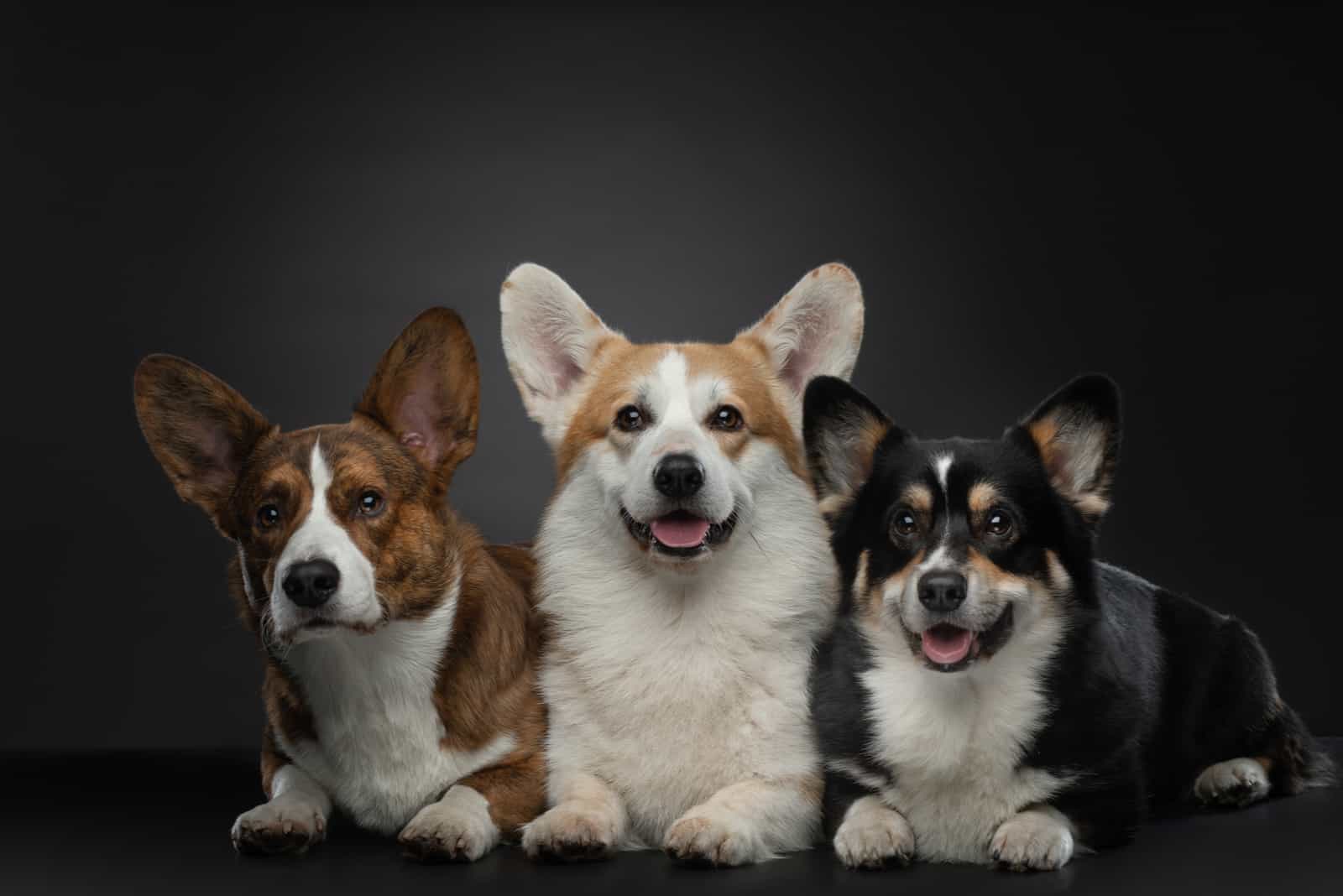
Although most people are used to calling these adorable pups Corgis, technically, that might not be specific enough.
The full name of the breed group is Welsh Corgis (because they originally came from Wales). However, there are two different breeds of these doggos as well, and they are:
Cardigan Welsh Corgi
Welsh Corgis are indeed amazing and quite unique, especially because of the fact that two dogs can look almost the same and not belong to the same breed.
It’s important to keep in mind that Cardi Corgis (also known as Cardiganshire or Cardigans) are similar to Pembrokes, but they’re still not the same, even if they share the same coat colors.
A Cardi might look almost the same as a Pembroke, but they still inherit most of their traits from different ancestors.
Essentially, both types are considered small canines, but Cardigans are a bit bigger and stockier than the other one.
Pembroke Welsh Corgi
Pembrokes have been quite popular for the last few decades among dog owners, which is why they became more common than Cardis in the majority of kennels and families.
Pembrokes are smaller than Cardigans, but they’re not the same as Teacup Corgis (Mini Corgis), which are crossed with other miniature dog types on purpose in order to create a miniature Corgi.
However, the thing that surprised me more than anything is that Pembroke brindle canines aren’t recognized officially by any organization or institution because it’s practically impossible for a Pembroke to naturally develop this type of coat color.
This doesn’t mean that you won’t have a chance to see this dog in brindle hue, but that’ll be a much rarer sight than a brindle Cardigan Corgi.
2. Cardigan Welsh Corgi Brindle Pups Are Acknowledged By The AKC
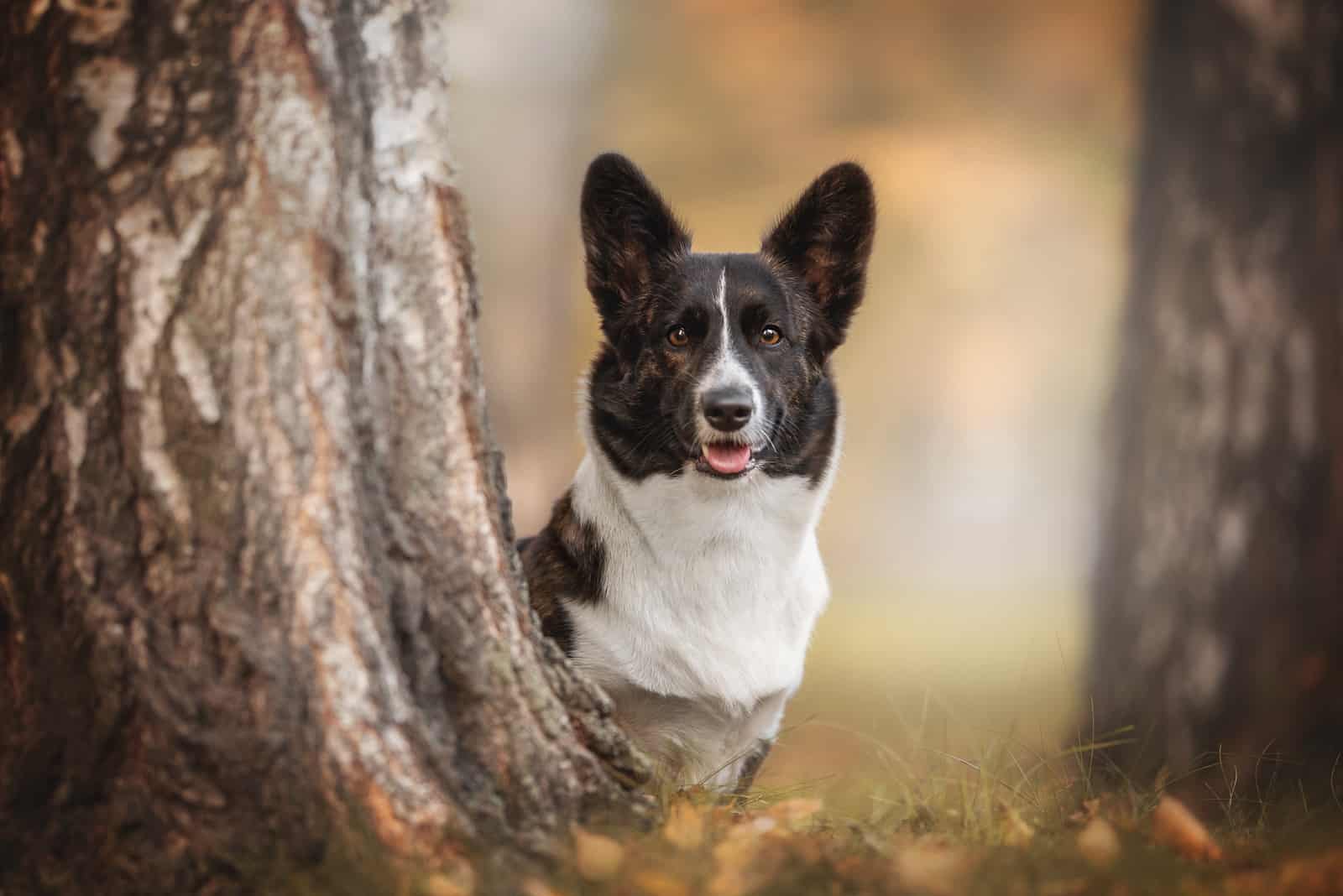
Here, it’s very important to make a distinction between Cardigan Welsh Corgi puppies and Pembroke Corgi pups. Generally, both types are acknowledged by the American Kennel Club, but not in every possible coat shade and pattern.
As I mentioned above, brindle Pembroke Welsh Corgi is not recognized officially by any institution or association related to breeding standards of canines, including the Cardigan Welsh Corgi Club Of America, which sets the breed standard for these pups.
On the other hand, brindle Cardigan pups are accepted as up-to-standard Corgi pups, along with black, red, blue merle, and various shades in between.
When it comes to Pembrokes, they’re accepted in red, black and tan, sable, black and white, and fawn hues only.
RELATED: What Are Red Corgis? Pembroke And Cardigan Corgi Breeds
3. Brindle Corgis Leave Traces All Around The House
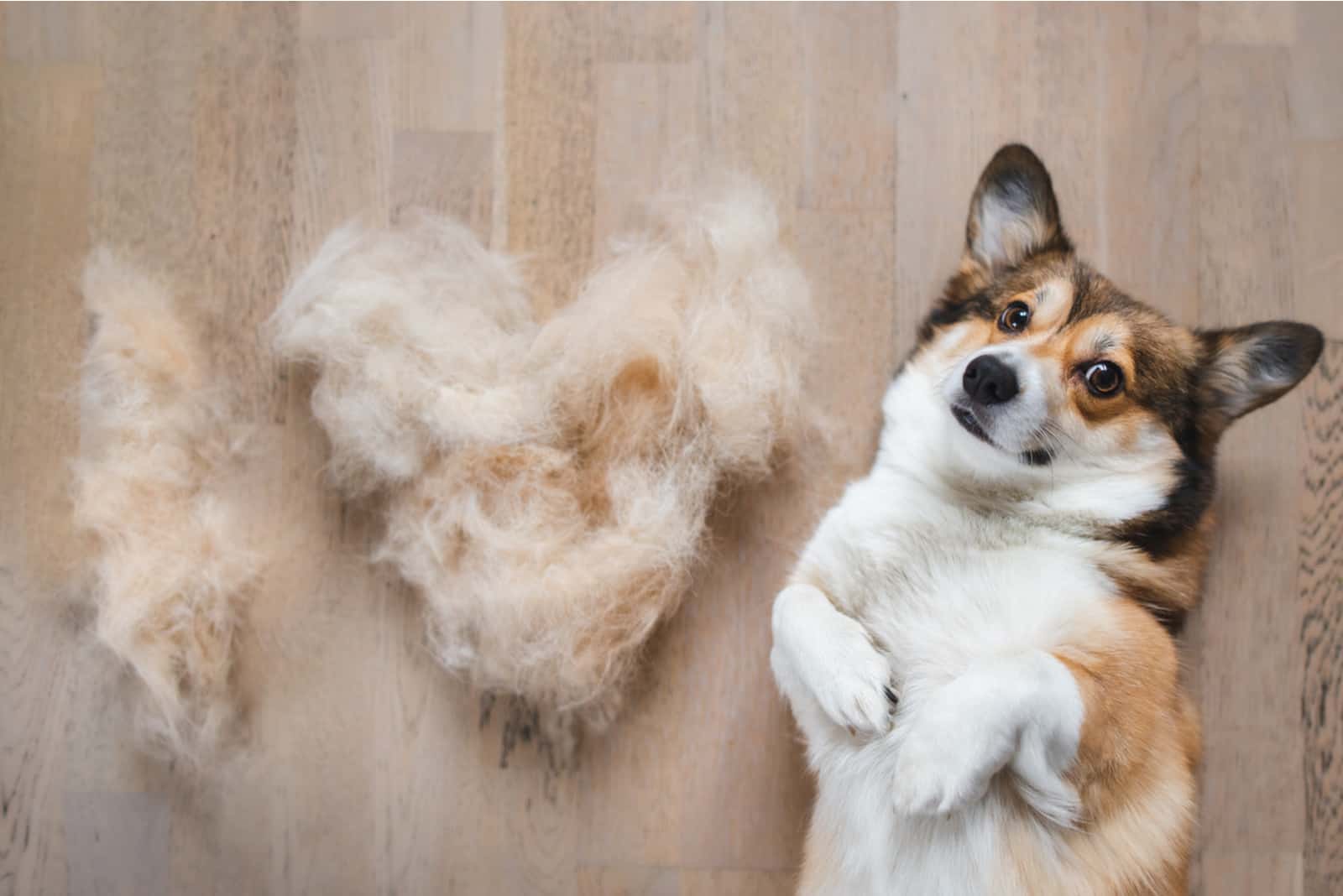
Most potential dog owners seem a bit disappointed after they find out that Brindle Corgis shed just as much as any other Corgi.
While I do agree that this isn’t the best news you could hear, the fact is that most dog breeds shed; therefore, the chances of getting a heavy shedder are quite high.
However, if you take care of your Corgi’s brindle coat regularly, the shedding might be reduced to a minimum.
Find a good brush for a Corgi, repeat brushing two to three times per week, and your doggie will be free of excessive hair and tangles!
4. So, Are Brindle Corgis Hypoallergenic?
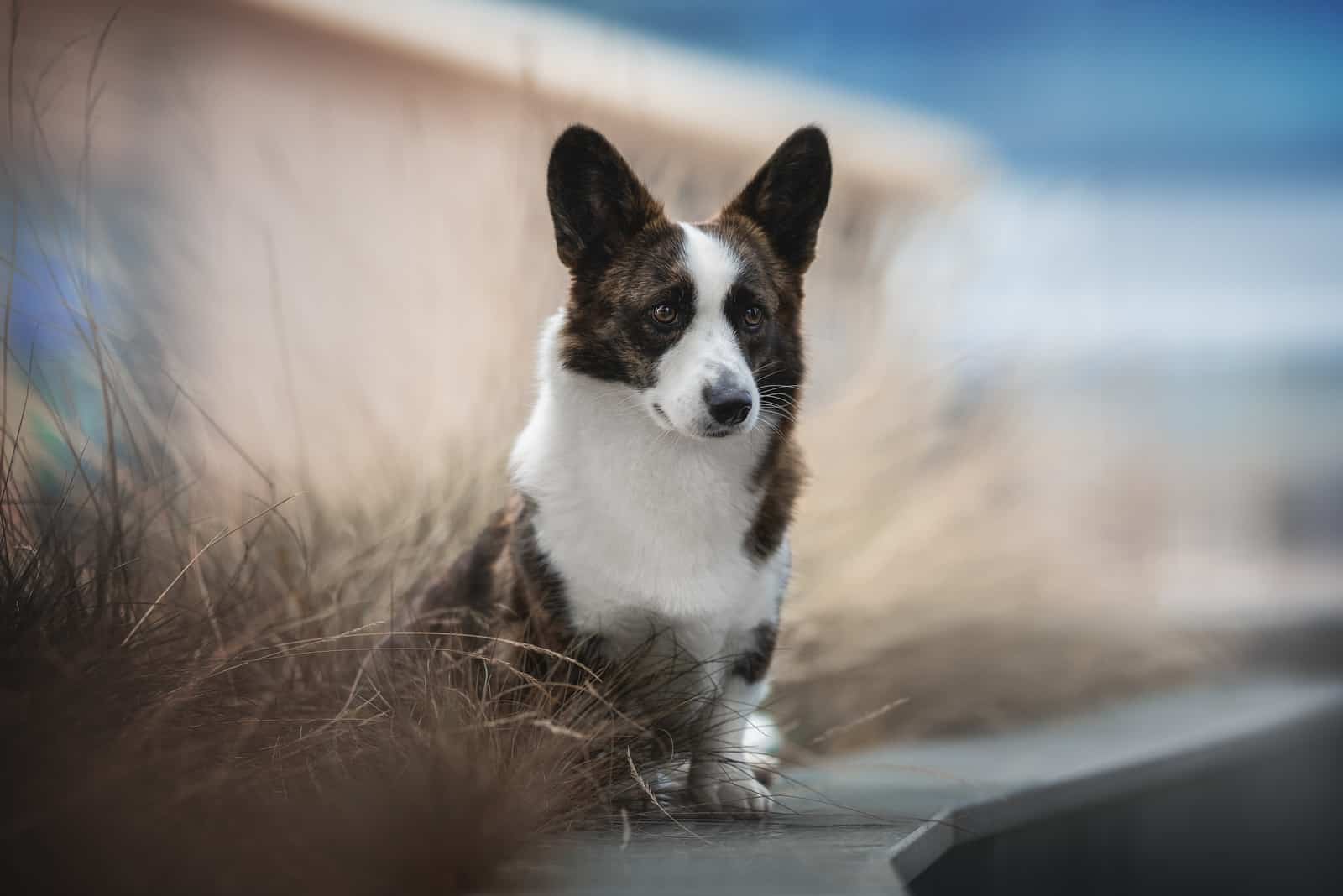
The answer to this question is sadly negative; brindle Corgis are not nearly hypoallergenic as Dachshunds, German Shepherds, F1 Goldendoodles, etc.
Even though potential Corgi owners are aware of the fact that these pups have a lot of coat hair and that they’re rather heavy shedders, part of the Corgi fans that have allergic reactions (or someone from their family) still have a bit of hope that Corgis in certain colors are hypoallergenic.
Sadly, the color of the coat doesn’t have any impact on shedding, which implies that these puppies just aren’t suitable for people suffering from allergies.
If you or your family member suffers from mild allergies, your best choices are definitely Bichon Frise in all colors or an F1 Labradoodle.
5. Brindle Corgis Were Known As Herding Dogs
You might be surprised to hear that Corgis, including brindle ones, were considered a herding breed in the past.
Welsh Corgi dogs might seem small because of their short legs and fluffy appearance, but they have amazing herding instincts, which is why they were considered one of the best dog breeds for guiding cattle.
The physical appearance of the Corgi breed was actually a great plus for their task. Corgis were small enough to successfully avoid the cattle while they were moving, which is why they got the nickname, “dwarf dogs”.
Therefore, don’t be surprised by the energy your Corgi might possess as it runs in their genes.
6. Brindle Corgis Possess A High Level Of Intelligence

Most people aren’t familiar with the fact that Corgis are highly intelligent canines. Actually, these pups are so intelligent that they’re placed in the 11th spot among the 110 most intelligent canines around the globe!
Their intelligence is the main reason why purebred Corgis are so easy to train. Your Brindle Corgi won’t have any trouble acquiring any type of command you want to teach it, and it will be able to learn a new trick with lightning speed.
But, you should keep in mind that this pup might also be strong-willed, especially if you insist on training or playing when they’re not in the mood.
The best way to keep your pet entertained is to involve it in mental stimulation training during playtime. You can do so by getting it some dog puzzles or other mentally stimulating toys.
7. Brindle Corgis Have Their Own Way Of Stating Their Opinion
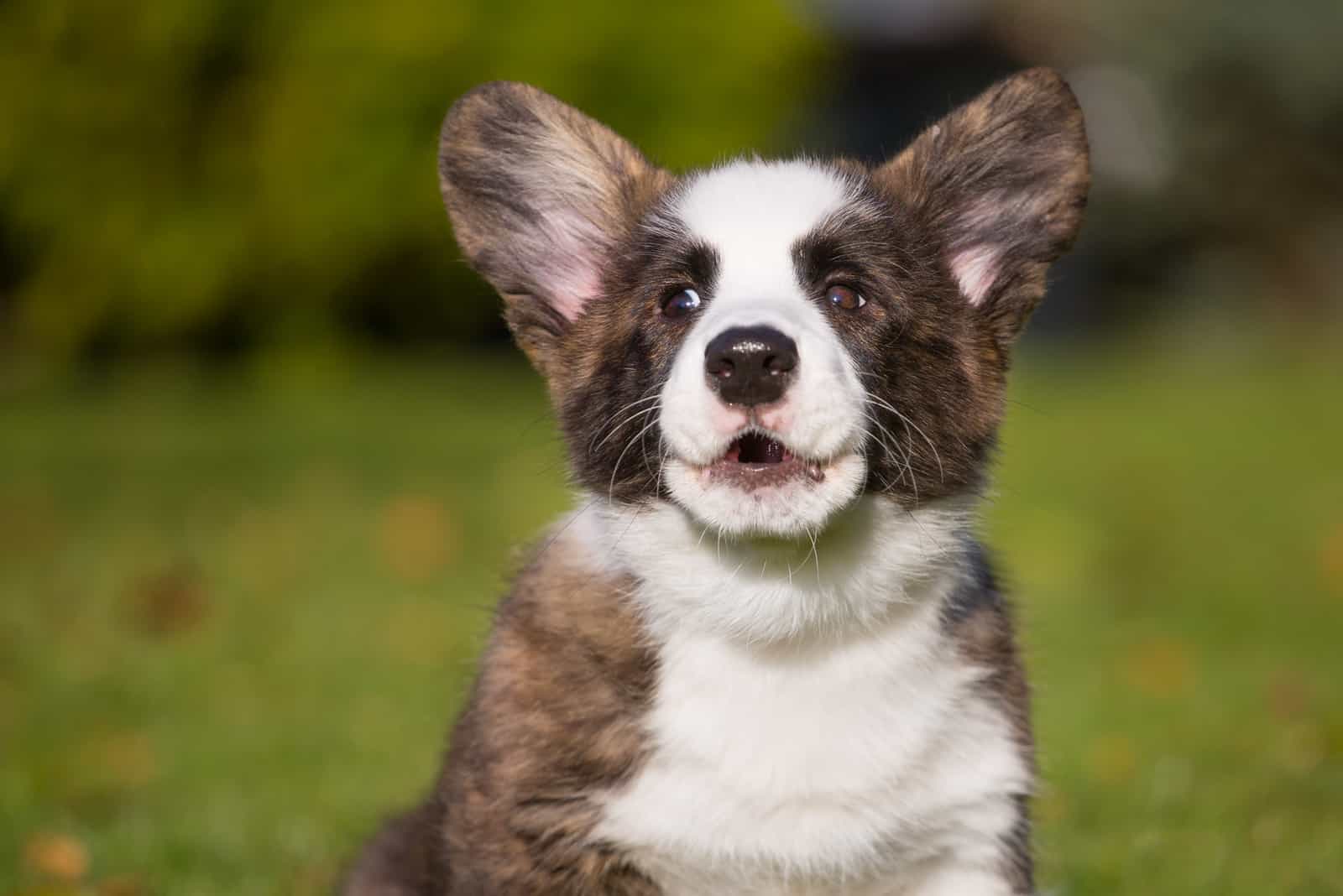
Corgis might be small canines, but they’re definitely big barkers. Some experts think that they inherited this trait from their herding ancestors, which were mostly farm canines and watchdogs.
Your Brindle Corgi might use barking to show disapproval, or emotions in general, but it also might be asking for a treat.
There might be no successful way of preventing the excessive barking, but once you get to know your pup, it’ll be a lot easier to respond to its vocal requests.
8. The Coat Color Does Not Affect A Corgi’s Health
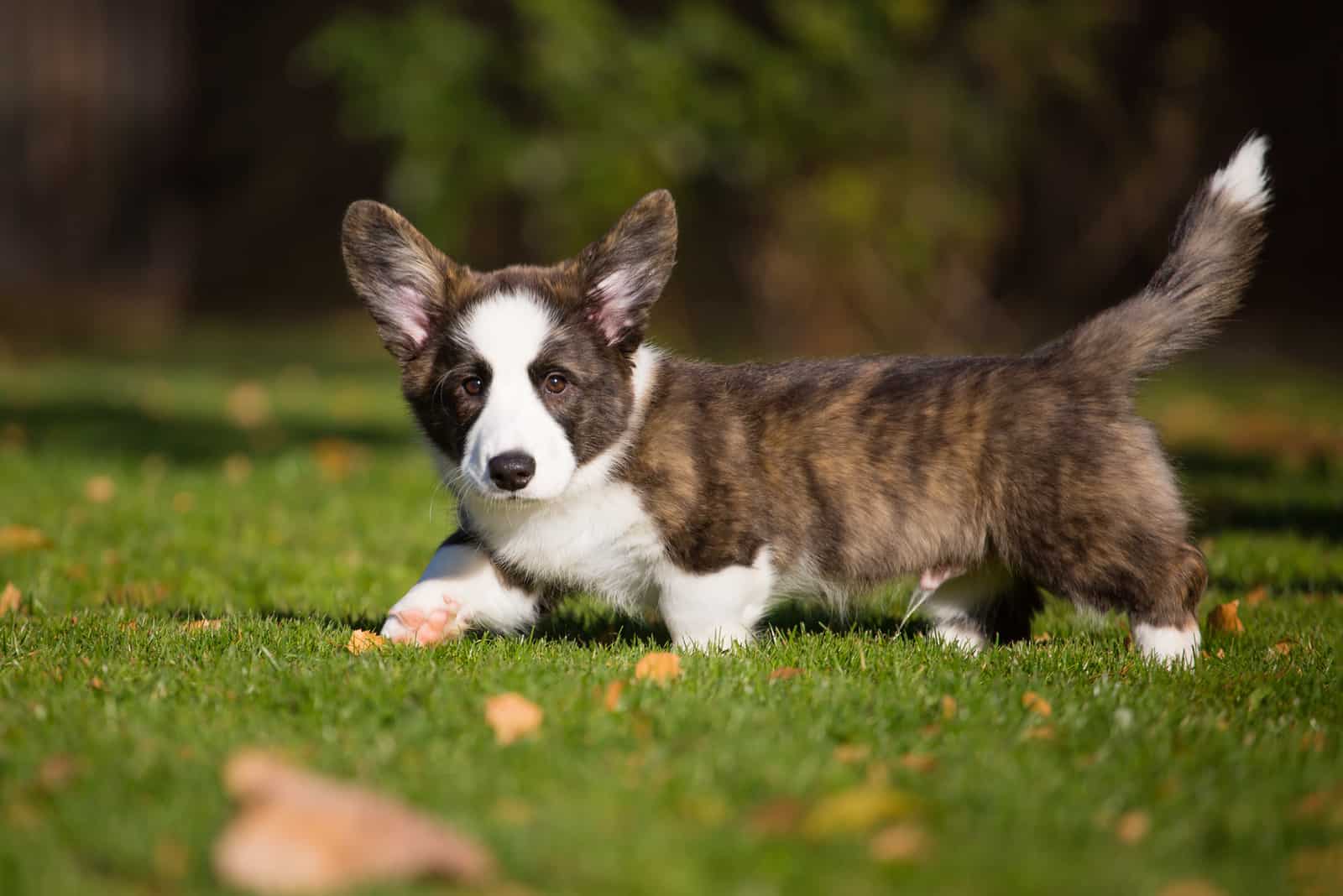
Brindle Corgis are not very common, but that doesn’t mean they’re any different than their siblings in terms of health and general well-being.
The Brindle shade is characterized by the dark streaks on certain parts of the Corgi’s back and its head, while the rest of the body is usually covered with brown and white markings.
The dark lines on the body are the main reason why this type of canine is frequently referred to as a “tiger-coated” pup.
The blue merle Welsh Corgi is just as uncommon as the brindle one. The origin of these colors is considered a result of crossbreeding that happened in the past.
Therefore, some breeders and canine owners might find them rather unnatural, but according to the AKC, they’re within the breed standard, so there’s no need to fear them.
White Corgi
There has been quite a discussion about the existence of white Corgis. Some people claim there are certain examples of white Corgis, while others strongly oppose such opinion by stating these canines belong to the “silver” shade group rather than white (as most of them have at least one stroke of silver on their body).
This type of dog might have specific skin conditions that aren’t related to other color types such as tricolor, red, or fawn.
However, when it comes to a Corgi with brindle points on its coat, there’s absolutely no fear of the coat shade having any influence on its health.
Brindle Corgi’s Lifespan
The life expectancy of Brindle Corgis isn’t any shorter or longer than that of Corgis in other coat colors.
According to the statistics, a Corgi’s lifespan is between 11 and 15 years depending on their health, diet, and general well-being.
Pembrokes might live a bit shorter than Cardis (most Pembrokes live up to 13 years), but that also depends on their life conditions.
If you want to purchase a pet from a reputable breeder, you should request to see its health certificates and records, including the vaccination card, congenital disease test results, and other necessary documentation.
9. Brindle Corgis Are Good Family Dogs
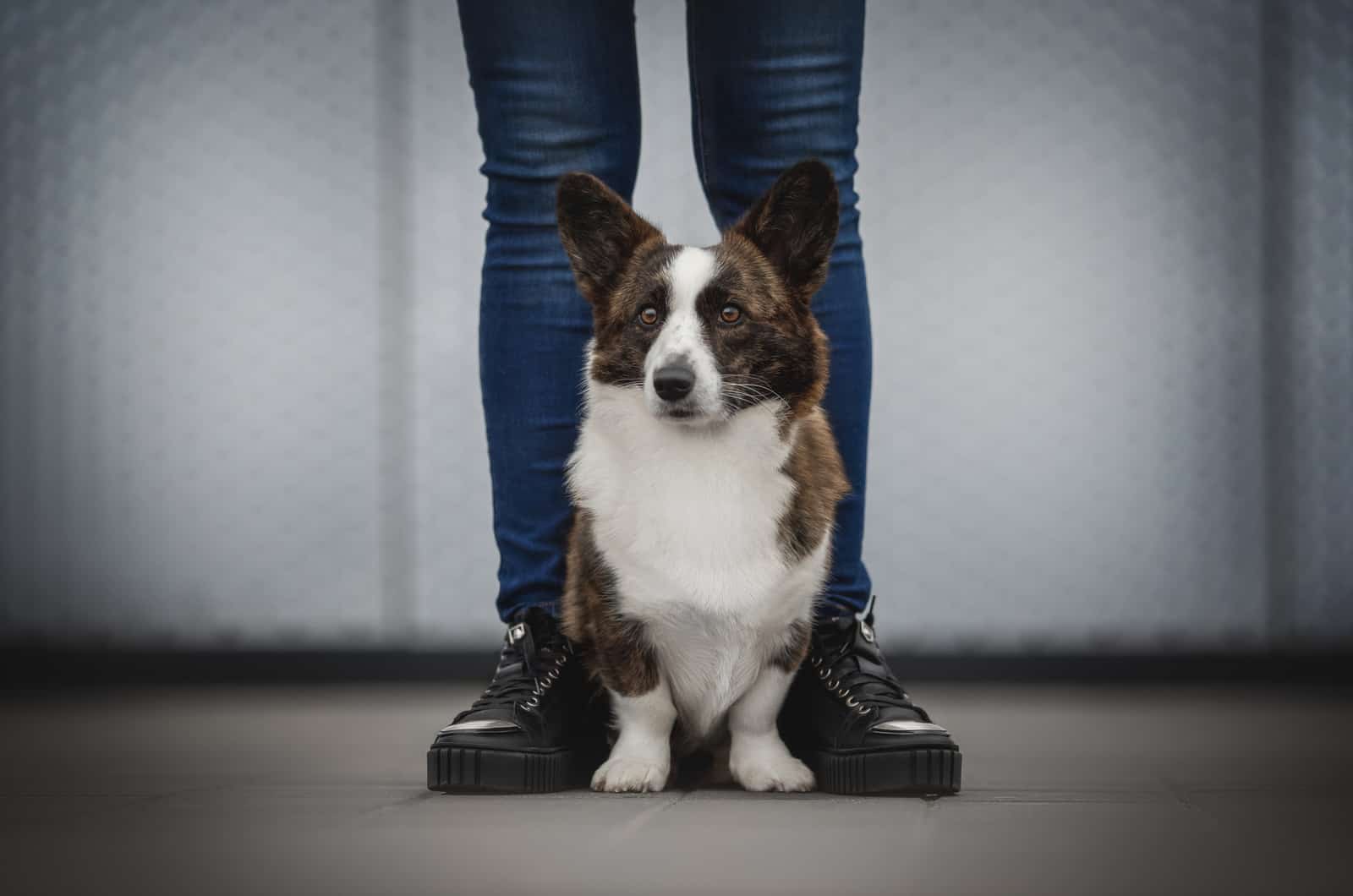
Corgis are one of the most flexible canine breeds that can get accustomed to living in almost any area.
They’re great pets for people living in urban parts of a state because of their size, but they can easily get used to living in the country, especially because of their past.
They are fiercely loyal, smart, and cute dogs that easily get used to changes, which is why Corgis are great for families with kids or those who are planning to start a family anytime soon.
These small dogs have plenty of energy, which is why they’ll soon become your children’s best friends.
This type of doggie will certainly become your new family member rather than a family pet and will easily get attached to you in no time.
10. Brindle Corgis Don’t Get Along Easily With Other Animals

Corgis are truly lovable and amiable pets that easily get under your skin. They’re very flexible about everything except other pets.
No, Corgis are not aggressive, but they are quite protective of their owners and family, which is why they sometimes might seem a bit unfriendly towards other animals.
However, all it takes is a little bit of training and time for them to become friendly to smaller pets, such as cats. Remember, Corgis do have herding instincts, which is why they might try to nip at these animals.
Training your Corgi will be a piece of cake because of its mental and physical skills. However, keep in mind that the main key to successful training is consistency.
The best way to prevent such situations is to start with reinforcement practice as early as possible, so there won’t be any problem.
11. Welcome To The Royal Family
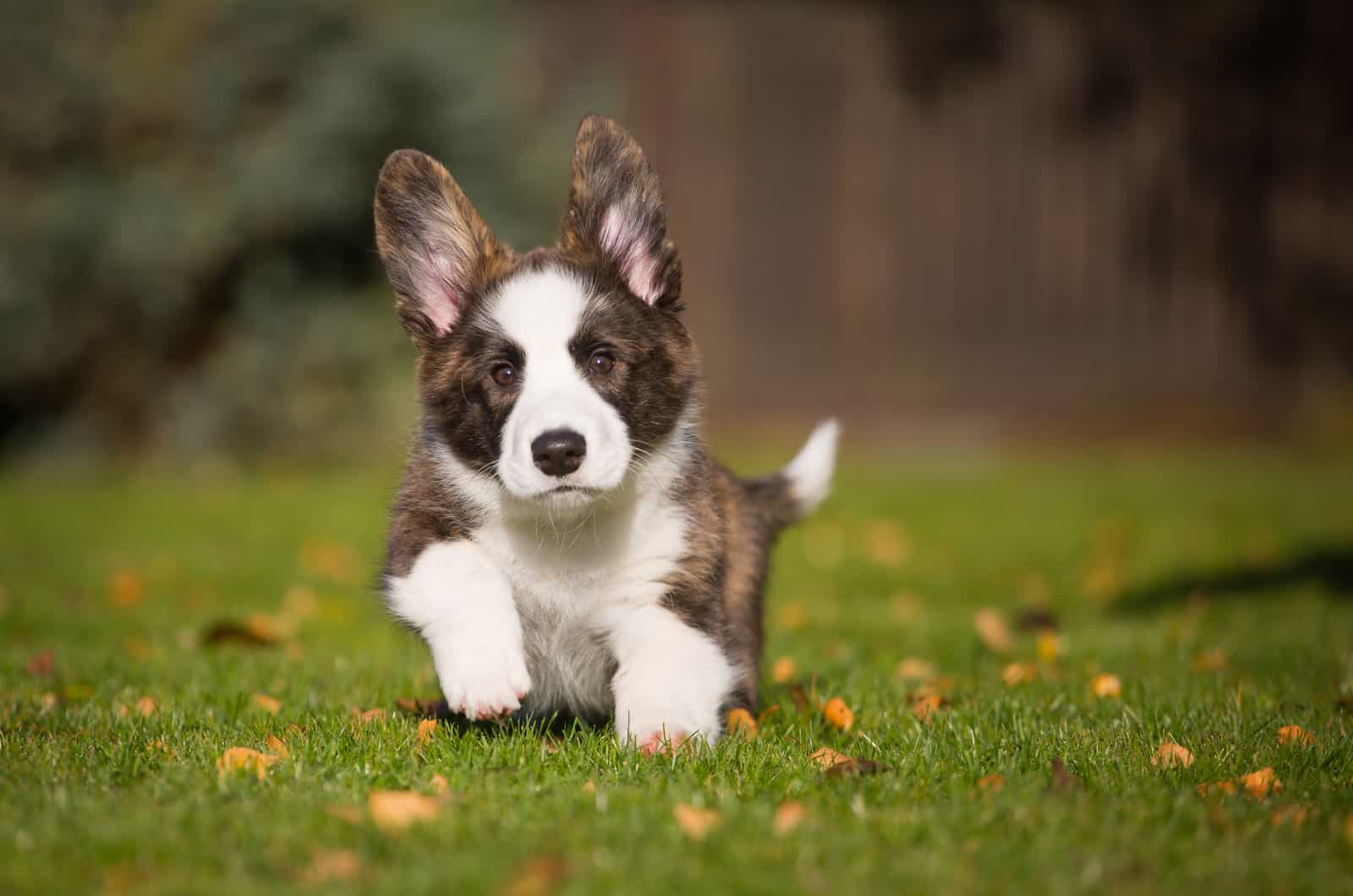
Of course, you won’t become a part of the royal family if you get a Corgi, but your love for Corgis might be a connection to Queen Elizabeth, who adores these pups!
Corgis have been a part of the royalty for years, ever since George VI got its first pup of this breed.
Queen Elizabeth II has been so attached to these furry balls that she has already had thirty pups so far. Therefore, if you ever have a chance to meet her, you’ll surely have a topic to talk about.
Brindle Corgi Health Issues

Photo from: @inspiredbycardigans
Brindle Corgis might not have any health problems related to the color of their coat; however, they’re not excluded from the common health conditions that might affect this dog breed in general.
The most frequent health issues that appear with Corgis, including the brindle ones, are:
Epilepsy
This health condition appears in many dog breeds, including French Bulldogs, Aussies, Schnauzers, Golden Retrievers, etc.
This disease is indicated by seizures that happen spontaneously as a consequence of brain abnormalities.
Canines that are suffering from epilepsy show symptoms such as staring into an empty space for a long time, running in circles, twitching, drooling, etc.
Degenerative Myelopathy
The most important thing to understand is that this is a chronic condition which affects the quality of your pet’s life in a big way.
However, with the right treatments and therapy, certain symptoms of the disease might be slowed down (or even prevented).
Unfortunately, there’s still no cure for DM. Most pets can live up to three years after being diagnosed.
Hip Dysplasia
This is probably one of the most common health issues for all breeds. There’s almost no dog breed that doesn’t have an increased risk of dysplasia, but it’s even more frequent with giant dogs such as Bernese Mountain Dogs, Cane Corsos, Saint Bernards, etc.
The main symptom of this condition is strong hip pain, followed by leg dysfunction.
The full treatment can be done surgically, but if you want to decrease the risk of it, the best way is to reduce your pet’s weight, add joint supplements to your Corgi’s dog food, include regular training and exercise, etc.
Intervertebral Disc Disease
The simplest explanation of this disease would be a back issue caused by a ruptured disk.
The first symptoms of this disease are usually a low neck position, back pain, urinary incontinence, limping, etc.
As you may assume, the best way to cure IVDD is surgery. However, if you’re looking for non-invasive treatments, you can try physical therapy, diet, crate-rest, etc.
Urinary issues and problems with eyesight shouldn’t be ignored either. If your dog’s actions deviate from its usual behavior in any way, it would be wise to contact your vet and ask for advice.
There are plenty of health problems that might be diagnosed in the early stages and treated in time in order to prevent any severe consequences.
What Is The Rarest Color Of A Corgi?
Although Brindle Corgis aren’t very common, the brindle shade isn’t the rarest hue of this dog breed.
Sable seems to be the most unique Corgi shade, even though it might be considered as a pattern rather than a color.
As you may know, Corgis usually have a double coat, which is in different colors in most cases.
When it comes to sable Corgis, the undercoat is usually covered in tan shade, while the topcoat mostly comes in darker hues.
How Much Does A Corgi Cost?

Photo from: @inspiredbycardigans
The average price of a Corgi is about $1,200, but you might have to pay up to $2,000 if you’re looking for a pooch with show-quality.
If you want to purchase a Brindle Corgi, you’ll pay up to $3,000 for a high-quality pup from an ethical breeder.
RELATED: The 5 Best Corgi Breeders In Ohio
Brindle Corgis: Wrapping Up
As you can see, Brindle Corgis are just as reliable, sweet, and loyal as their siblings that come in other colors.
Essentially, the color of the canine doesn’t play such an important role in the quality of a dog’s life and its health.
However, white canines might be considered to be faulty in almost every dog breed (except those whose main shade is white) because it’s believed that white canines might have a higher risk of deafness or other health issues.
Brindle Corgis will be a great addition to your family, especially if you’re looking for a more unique looking pet with great social skills!
Read Next:
A Quick Guide To Cowboy Corgis: Your Questions Answered
Fluffy Corgi: Everything You Need To Know Before Buying
Australian Shepherd Corgi Mix – The Ultimate Herding Dog















